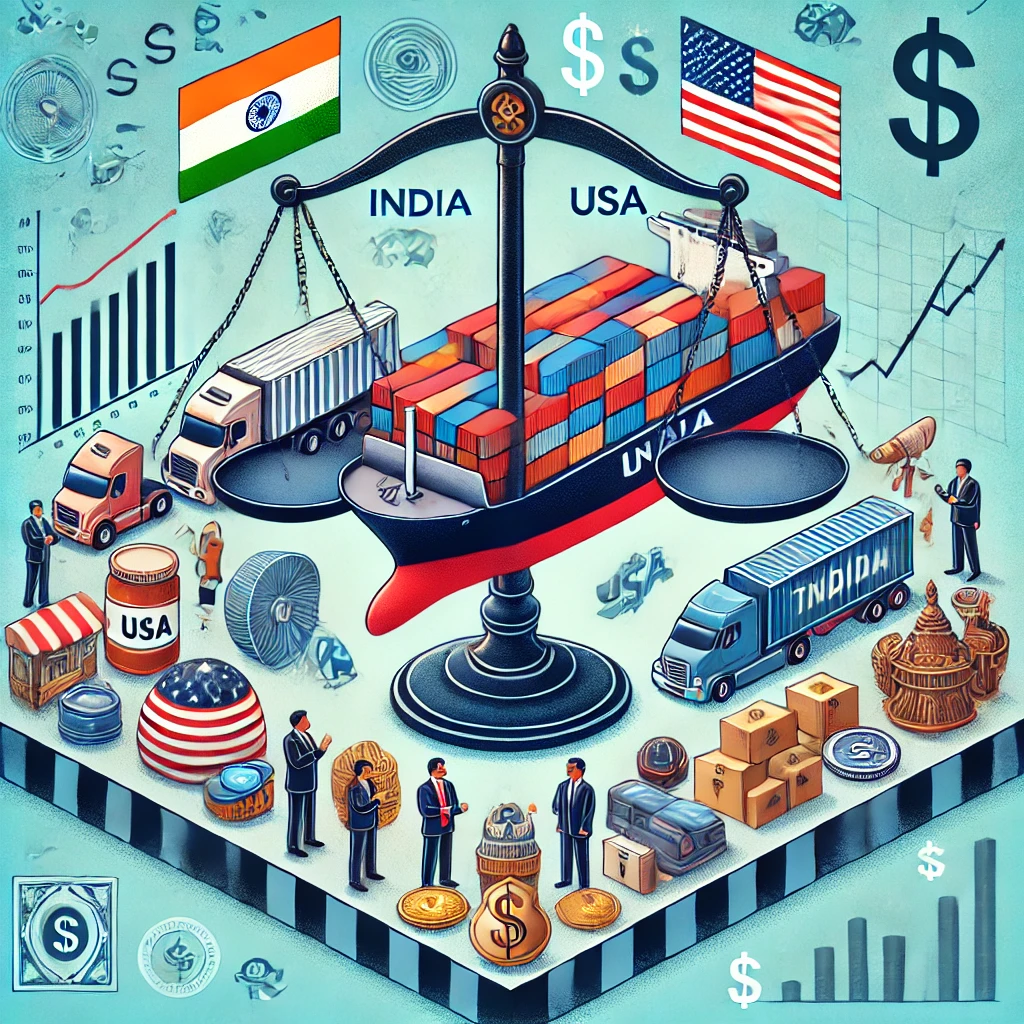U.S. President Donald Trump announced the implementation of “reciprocal tariffs” targeting imports from various countries, including India. This policy aims to match the tariffs that these nations impose on U.S. exports. India is set to face a 26% tariff on its exports to the U.S., affecting key sectors such as pharmaceuticals, automobiles, and jewelry.
Economic Implications
1. Trade Balances and Deficits: By imposing reciprocal tariffs, the U.S. intends to reduce its trade deficits by discouraging imports and encouraging domestic consumption. However, this approach may lead to retaliatory measures from affected countries, potentially escalating into a trade war that could harm global trade balances.
2. Consumer Prices and Inflation: Tariffs typically increase the cost of imported goods. For American consumers, this could mean higher prices for products such as generic medications from India, automobiles, and jewelry. Elevated consumer prices can contribute to inflationary pressures within the economy.
3. Impact on Domestic Industries: While tariffs aim to protect domestic industries by making foreign products more expensive, they can also lead to increased production costs for U.S. manufacturers that rely on imported components. For instance, the auto industry may face higher costs for parts sourced from abroad, potentially affecting competitiveness and profitability.
4. Global Supply Chains: Modern manufacturing often involves complex global supply chains. Imposing tariffs disrupts these chains, leading to inefficiencies and increased costs. Industries such as pharmaceuticals, which depend on raw materials and intermediate goods from multiple countries, may experience significant operational challenges.
Sector-Specific Effects
Pharmaceuticals: India is a major supplier of generic drugs to the U.S. The 26% tariff could increase drug prices, impacting healthcare affordability. Pharmaceutical companies have lobbied for delayed implementation to adjust their supply chains accordingly.
Automobiles: The auto sector is particularly affected, with a 25% tariff on all foreign-made automobiles. This move aims to boost domestic car manufacturing but may lead to higher vehicle prices for consumers and potential retaliation from trade partners.
Jewelry: India’s jewelry exports to the U.S. will become more expensive, potentially reducing competitiveness in the American market and affecting artisans and exporters in India.
International and Domestic Reactions
Internationally, affected countries have expressed concerns and are considering countermeasures. The European Union, for example, has warned of potential retaliatory tariffs. Domestically, reactions are mixed. Some labor groups support the tariffs, believing they will protect American jobs, while others, including certain business leaders and economists, warn of the potential for increased consumer prices and economic slowdown.
Conclusion
The introduction of reciprocal tariffs by the U.S. represents a significant shift in international trade policy, aiming to address perceived imbalances. While the intention is to bolster domestic industries, the broader economic implications, including potential trade wars, increased consumer prices, and disruptions to global supply chains, warrant careful consideration. The effectiveness of this policy in achieving its objectives without unintended negative consequences remains to be seen.
Impact of U.S. Tariffs on Indian Exports: A Trade War in the Making?
